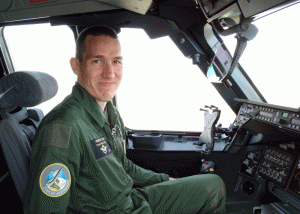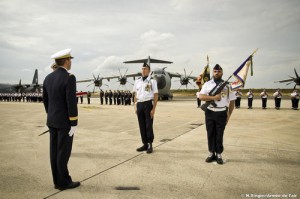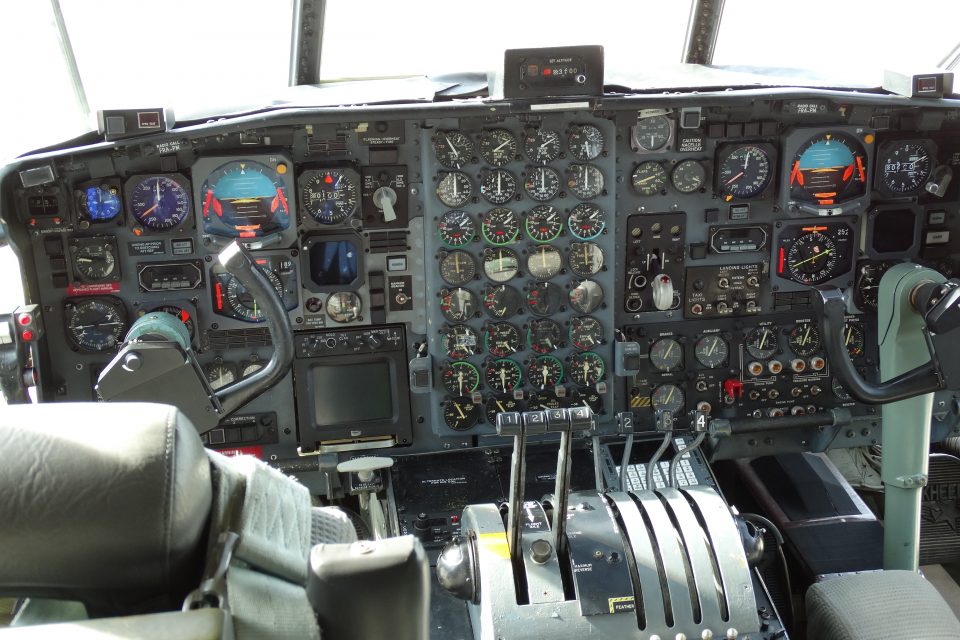2015-04-24 By Robbin Laird
This is fifth time I have had the opportunity to visit the first or early squadron of a new generation air system.
I started with the Osprey more than eight years ago, have had multiple visits to various bases involved in the standup of the F-35, and visited the Wedgetail the KC-30A squadrons in Australia. I have watched the A400M emerge from briefing charts to test aircraft, to production aircraft, and now have had a chance to visit the first operational squadron at Bricy Air Base in France.
There is a common theme among the early adopters – real competence and enthusiasm and a clear sense of a way ahead.
If the many critics of all of these aircraft had carried the day, Western airpower would have died a slow death.
Instead, these hard working and forward leaning young men and women of the first squadrons shape the way ahead, learn the strengths and weaknesses of the early entry into service aircraft and are part of the innovation process in bringing a new series launch of aircraft into their successful use in combat.
During my visit to Bricy, I had a chance to talk at great length and visit the base with Lt. Col. Benoît Paillard, the Commander of the Transport Squadron, 1/61, Touraine and then to tour the training facility and talk with the Commander Transport Crew Training Center, Lt. Col. Christophe Piubeni.
Lt. Col. Paillard has been in the French Air Force since 1997 and flew the C-130H for nine years and then flew with the RAF and gained C-130J experience as a prelude to the coming of the A400M.
He had five tours with both the FAF and the RAF in Afghanistan and six tours in Africa.
He was qualified for personnel, equipment and supply drops was well as NVG ops during his time in Afghanistan.

Lt. Col. Piubeni has graduated from the FAF Academy in 1998, and flew as a tactical transport pilot at the 1/64 “Bearn” squadron from 2002-2006 on the C-160 NG.
He then became an instructor at the Training Air Transport Academy from 2006-2008.
He then was the Chief Pilot at the 2/64 “Anjou” Squadron from 2008-2010.
He then became head of the training on A400M from 2012-2014 (with his qualification on the A400M in July 2013).
He is currently 2IC of the Transport Crew Training Center at the Bricy base.
As Lt. Col. Paillard described his experience in Afghanistan: “We practiced how to support moving troops in Afghanistan and to supply forward operating bases when they were isolated by weather or other factors. We operated as a key element for insertion of forces.”
When asked how similar the FAF and the RAF are, he noted “We achieve common results but do it by completely different approaches.
As anything with the French and British people, we have completely different ways to do things.
And this will happen as well as the Brits will operate C-17s and A400Ms and we will operate A400Ms in both roles they envisage for two different aircraft.”
He then added the following important point: “The main lesson is that for any problem, there are lots of different but efficient solutions.
The key is then not to limit our imagination but to keep an open mind.”
There are six A400Ms at the base with a seventh coming this Fall.
The base currently operates C-130Hs as well as A400Ms but eventually will only operate A400Ms and will probably be the largest base of A400Ms in the world by the time the French Air Force (FAF) ends up with its full compliment of aircraft.
Although the plane has been in operation only for a short period of time, and is undergoing further development, it has already had an important impact. The plane is directly connecting France to operations in Africa and the Middle East without the need for refueling during the mission.
And the plane can carry not only supplies and troops but helicopters as well.
Paillard noted:
One of the key advantages of the A400M will be that we can fly helicopters directly from France to the troops which we can not do right now.
We cannot ship the helos directly back to France, currently with our own assets.
With the A400M we will be able to do so.
A test and evaluation team is working the processes of how best to put helos into the plane and how to take them out.
We will save significant amounts of time, and time is a key element of combat success.
The impact will be strategic for France, whereby interventions can occur directly from France without having to preposition forces in the area of interest.
The plane is in the process of development, and is a software upgradeable plane, which is evident from looking at the fly by wire cockpit and the loadmaster systems.
A look at the old and the new certainly highlights the coming of the digital age. The first photo is the A400M cockpit; the second that of the C-130H based at Bricy.
A three-person crew operates the plane, with significant automation built in to the loading, unloading and ejection of loads in flight process.
The plane does not yet do night insertion operations or operate in higher risk areas.
According to Paillard, the squadron will start night insertion operational training this Fall and will receive defensive aides early next year.
And as the software evolves, the capability of the plane will evolve with it as well.
Similar to the discussion with Air Commodore Gary Martin, the transition from the C-130 to the A400M has been a jumpstart in rethinking operations.
Rather than taking several aircraft and operating over several days, the FAF can take a smaller fleet of A400Ms and operate in several hours to support the forces operating in the objective area.
Air Commodore Martin spoke of both the Australian Army having to adjust to these new operational realities as well as the politicians as well, now thinking in terms of rapid effect, rather than slow motion operational forces. The same is clearly under way in France as well with the A400M entering the FAF and the C-130Hs moving toward African centered operations.
There have been a number of adjustments necessary to deal with the new aircraft, most noticeably with regard to the role of the loadmaster.

As Lt. Col. Paillard noted, the loadmaster is operating a single console and working the load with the pilot and the co-pilot, which is more technical loadmaster operation-centered than the traditional flight engineer aircraft-centered loadmaster in the FAF.
This requires a change in the requirements for those operating as loadmasters aboard the A400M.
He spoke of the stability of the aircraft in flight and the core flexibility and strength of the wings to support a variety of operational situations, and felt that over time, the plane could take on a variety of new missions as C2, ISR and weaponization evolve over time.
Clearly, the squadron is feeding its experience to the software development team as they are evolving the tactics. The basic procedures for operating the aircraft are provided by Airbus and are common to the multi-national fleet.
The plane is software enabled and as such will evolve over time.
Lt. Col. Paillard said that “at the end of the day the C-130J is an upgraded C-130 built on the C-130 platform.
The A400M is a whole new platform built from the bottom up on a digital software foundation and will grow from that foundation over time.”
Commonality is important, but the objective is to have familiarity with each A400M users aircraft so that a common controller can operate a fleet of aircraft to support missions.
It is not about mix and match crews; it is about common understanding and dovetailing of capabilities for the A400M users.
Lt. Col. Paillard thought that challenge would be met in part by common learning within the European Air Transport Command, of which France is a key member.
“We operate the A400M through the EATC and not the FAF.
We have an A400M user group at EATC, which will play an important role going forward as well.
We need to train as we go to war and the EATC plays a key role as well.”
Paillard also highlighted the centrality of common maintenance techniques, procedures and training as a key part of the way ahead as well.
And parts sharing is a goal of the effort as well, and the RAF and the FAF have an agreement with Airbus for common support and as Paillard put it, “as we work through the approach we will open it to other nations as well.”
He clearly felt that the interoperability provided by a common aircraft was something to be reinforced by training and operations and would be a key target goal to be preserved over time.
“We do not want to end up like the Transall which was a common French and German aircraft but at the end became completely different aircraft.”
The training center at Bricy looks and feels like Seville, but is focused on training for tactics as well. According to Piubeni: “We add an operational layer to our training here at Bricy compared to learning the basic flying and related skills which are learned at Seville.”
Simulators can help in shaping a risk management approach to flying the aircraft, and that works best with the linking several simulators together and operating as a de facto missionized air group.
Although not yet achieved, the plan is that by 2018 cross-linked simulators can assist with mission training and planning.
This will be an important step ahead, and is another difference from how past introduction of systems is different from a 21st century approach.
As Piubeni highlighted, “We need to link to the NATO network for training as well.” The entire effort with the FAF is to shape a more effective national force and one very much coalition enabled.
Lt. Col. Paillard then added: “We need to link the training with how we operate together to get the greatest effect we can from our coalition assets.”
Piubeni highlighted that the partners were working to leverage each other’s investments to shape common training, and noted that pilots and maintainers for the FAF and the German Air Force would be trained at each other’s training facilities, to leverage different investments in the simulators to maximize cost effectiveness as well.
Paillard noted that “the German Air Force will train French maintainers and crews for basic training and we will train the German Air Force in tactics and operations.”
In short, as planes get added to the FAF, the planes will see their capability grow not only in terms of experience but with software upgrading of systems as well.
The A400M will be the workhorse for the FAF with the retirement of the Transall and the key reliance on the assets to deliver capabilities to the forward edge of operations.
And the FAF is looking as well to expand its capabilities through the coalition enablement of a common operational fleet of A400Ms with other users of the aircraft.
As Lt. Col. Paillard put it: “Our pilots have on average 200-300 hours of flying time with the plane; that is just the beginning. As we gain experience, and the planes grow with us we will be able to provide a significant capability for the French forces and our allies.”
For earlier pieces on standing up the French A400M squadron see the following:
https://sldinfo.com/the-introduction-of-the-a400m-into-the-french-air-force-a-catalyst-for-change/
Also see:
An Update on the A400M Training Facility in Seville: A Building Block in Allied Coalition Capabilities
04/20/2015 – In this interview conducted at the Seville, Spain A400M training center, two leaders in shaping the multinational training process describe the effort and its advantages.
With the standing up of national training centers, there is the challenge of keeping the training common and learning how to shape the future evolution of the training, combat tactics and of the evolution of the airplane itself.
Note: The slideshow above are photos shot on the day of my visit to Bricy and are credited to Second Line of Defense.
For a PDF which combines the articles on the visit to Seville with the visit to Bricy, download here:



